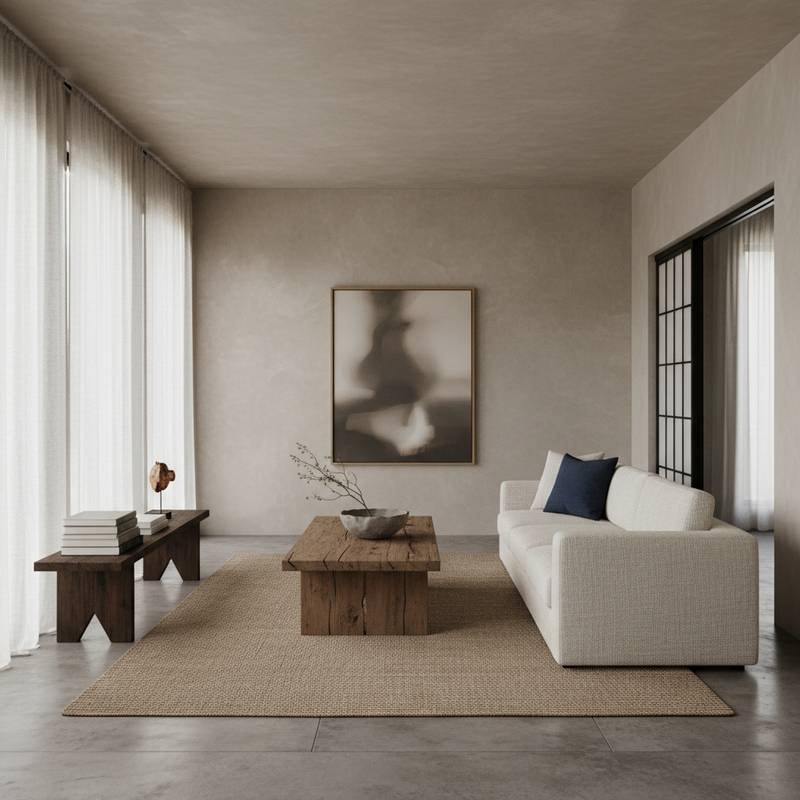Fusing Japandi and Wabi-Sabi for Enduring 2025 Homes
As a remodeling contractor, I observe design trends emerge and fade rapidly. Certain styles capture attention briefly, only to appear dated soon after implementation. In contrast, the fusion of Japandi and Wabi-Sabi possesses genuine longevity. This approach transcends fleeting fashions by prioritizing homes that evoke calm, honesty, and grounding. Both philosophies converge on core principles: simplicity, natural materials, and an appreciation for imperfection.
Homeowners seeking spaces that remain relevant for years will find this combination among the most strategic choices. The following sections outline effective integration methods.
Reasons Homeowners Embrace This Fusion
Contemporary homeowners often reject overly pristine, catalog-like interiors in favor of genuine, individualized environments. Japandi and Wabi-Sabi together provide precisely that authenticity. Consider these key advantages:
-
Natural Materials Convey Authenticity
Materials such as oak flooring, linen upholstery, and stone countertops acquire patina through use. This philosophy embraces such evolution rather than resisting it, allowing surfaces to reflect lived experiences. -
Subdued Colors Ensure Timelessness
Palettes featuring beige, taupe, charcoal, and soft greens promote equilibrium and serenity in rooms. These hues resist obsolescence, maintaining relevance across seasons. -
Minimal Clutter Reduces Daily Strain
Surfaces free of excess and items selected for utility simplify routines. This alignment suits the demands of contemporary lifestyles effectively. -
Imperfections Infuse Warmth
Elements like a handcrafted vase with an asymmetrical shape or a table bearing subtle tool marks introduce character. Wabi-Sabi underscores that flawless uniformity lacks depth.
Step-by-Step Guide to a Japandi-Wabi-Sabi Interior
Clients receive guidance through these structured phases to realize this harmonious aesthetic.
1. Establish the Architectural Foundation
Assess the inherent structure of the space prior to furnishings or hues.
- Maintain unobstructed views by eliminating non-essential partitions or protrusions.
- Opt for understated trim and eschew elaborate moldings.
- During renovations, select matte wall finishes to diffuse light gently and prevent harsh glare.
2. Select an Earth-Toned Base Palette
Foundational colors influence subsequent decisions profoundly.
- Favor warm neutrals such as clay, sand, or stone gray for cohesion.
- Steer clear of stark contrasts like pure black and white, which introduce undue severity.
- Introduce subtle hues via accents, including artisanal pottery or linen textiles.
3. Select Purposeful, Streamlined Furniture
Japandi furnishings emphasize modesty, low profiles, and ergonomic comfort.
- Prioritize items showcasing exposed wood grain and unadorned silhouettes.
- Reject glossy varnishes in favor of matte or oil-treated surfaces for genuineness.
- Merge Scandinavian precision with Japanese subtlety; for example, pair a straightforward oak dining table with rice-paper lantern fixtures.
4. Integrate Elements of Imperfection
Wabi-Sabi infuses vitality through deliberate asymmetry.
- Retain select pieces exhibiting age, such as a weathered wooden bench or a patinated leather armchair.
- Incorporate artisan-made ceramics or irregularly shaped tiles for tactile interest.
- Bypass factory-produced ornaments that appear overly refined.
5. Layer Textures with Intention
Textures counteract the austerity of sparse designs by adding sensory depth.
- Balance coarse and sleek elements, such as a linen-upholstered sofa against a honed concrete floor.
- Introduce fibrous options like jute area rugs, woolen afghans, or interlaced storage baskets.
- Preserve visual tranquility through adherence to earthy shades.
6. Optimize Lighting for Ambiance
Illumination shapes the emotional tone in Japandi and Wabi-Sabi contexts.
- Enhance daylight penetration with translucent draperies and minimal window coverings.
- Employ warm, indirect supplemental lights over stark, cool-toned bulbs.
- Rice-paper or rattan-shaded pendants deliver a diffused radiance that harmonizes with organic finishes.
7. Maintain Discipline Through Regular Curation
Restraint forms the cornerstone of these aesthetics.
- Survey each area periodically and eliminate non-functional objects.
- Resist the urge to populate every surface or ledge; negative space contributes equally to the composition.
- Achieve minimalism via thoughtful subtraction rather than acquisition.
Insights from a Contractor's Viewpoint
Constructionally, this aesthetic accommodates minor variances yet demands meticulous execution.
- Material Choices Are Paramount. Select solid hardwoods over laminates, as they endure refinishing and patina gracefully.
- Preparation of Surfaces Requires Precision. Matte plaster applications reveal applicator techniques, necessitating experienced craftsmanship.
- Lighting Installation Demands Foresight. Strategic positioning accentuates textures via shadow play.
- Allocate Budgets Judiciously. Premium materials involve higher initial investment but yield longevity and character development, minimizing future expenditures.
Wabi-Sabi rejects superficial economies; it honors skilled workmanship that accommodates natural flaws. Properly executed, this methodology proves cost-effective over time by curtailing replacements and refreshes.
Cultivating Lasting Serenity in Daily Spaces
Beyond aesthetics, Japandi and Wabi-Sabi transform the sensory experience of a home. Entry into such an environment conveys immediate tranquility. Organic materials respire, illumination softens, and no element competes for focus.
In my professional experience constructing and renovating residences, this synthesis withstands routine wear resiliently. It relies not on ephemeral vogues or ostentatious treatments but evolves positively with occupancy. Minor imperfections, like a table's faint scoring or a counter's subtle marking, enhance rather than detract from the overall narrative.
For those contemplating renovations or new builds, adopting this philosophy merits serious consideration. It promises sustained fulfillment, robust practicality, and profound tranquility seldom matched by other approaches. Where unpretentiousness encounters genuineness, a dwelling transcends mere utility to embody sanctuary.









